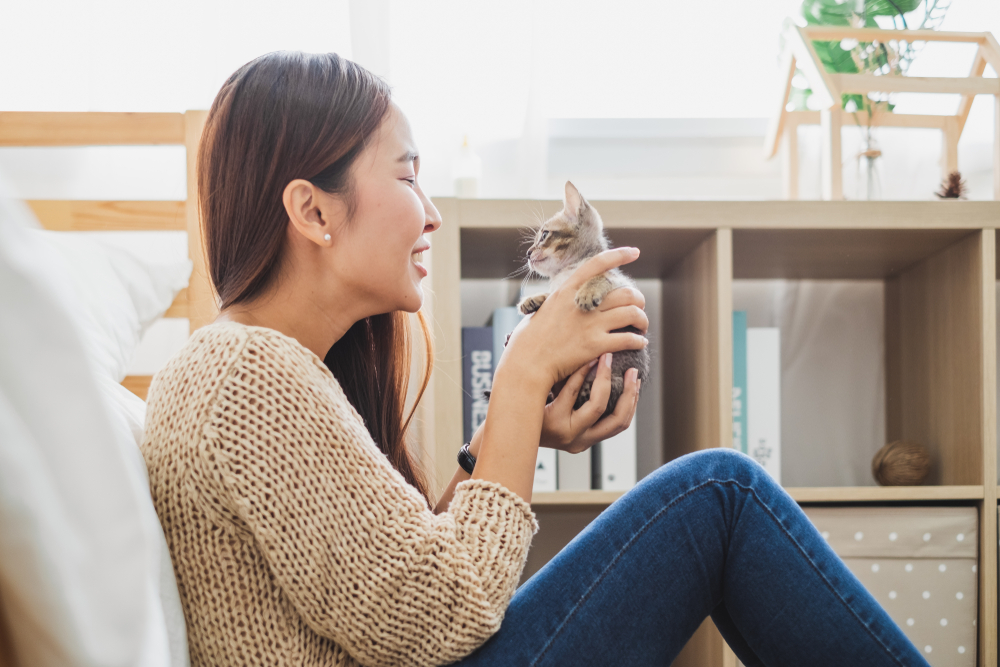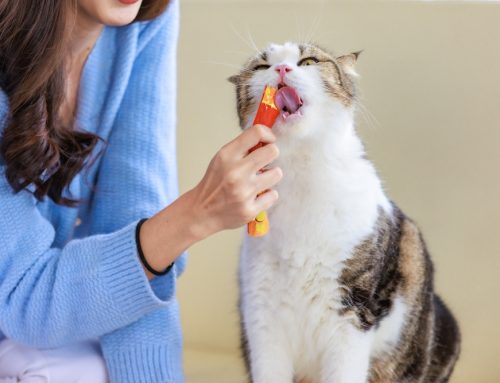Welcome home, kitty! Our local Neighborhood Veterinary Centers of Calder team has learned that there’s a new cat in town, and we are eager to help ensure a purr-fect transition for everyone involved. Whether your new cat is a wide-eyed kitten or a wizened senior, read our top tips for ensuring a safe, stress-free, and successful homecoming.
#1: Ensure your new cat is healthy
Before opening the door to your new cat, ensure a licensed veterinarian has examined them from nose to tail. Cats can transmit diseases and parasites that can put other household cats at risk for illness. Primary examples include feline respiratory viruses, feline leukemia, and feline immunodeficiency virus (FIV). Before finalizing your new pet’s adoption or bringing home a stray cat, ensure they are healthy, vaccinated, parasite-free, and have tested negative for transmissible feline diseases.
#2: Prepare a cat-proof space
Provide your new cat with boundaries and restrictions to keep them safe and protect other household pets and family. Plan to isolate your new cat to a small room for the first few days or weeks. Prepare the space by including essential items such as their carrier, food and water bowls, litter box, scratching post, bed, and toys. In addition, remove all hazards. Consider horizontal and vertical surfaces, and remove or relocate hazards such as:
- Electrical cords
- Window blind cords
- String decorations
- Breakable items
- Small objects that could be chewed or swallowed (e.g., toys, medication, ribbon, rubber bands, batteries, coins)
- Valuable furniture
- Candles
- Essential oils
- Pet-toxic plants
- Trash bins
- Chemical products and household cleaners

#3:Gradually introduce a new pet to an old-timer
A new pet can shift the social structure in your household and create unnecessary stress or aggression among pets. The best way to minimize friction and ensure all your pets’ safety is by making gradual and incremental introductions. In addition to isolating your new cat, you can help peacefully integrate your new feline friend and existing pets by following these tips:
- Start with scent — Wipe each pet from nose to tail with a cloth or towel and allow the other pet to investigate the item. Do this for several days.
- Share the love — Spend equal time on both sides of the barrier to ensure all pets feel cared for and comforted.
- Feed pets near each other — Gradually move each pet’s food dish closer to a shut door, keeping the two animals apart. As you move their food bowls closer to the door, the pets will become aware of one another.
- Provide protected contact — Once all pets are comfortable and calm with the preceding steps, begin allowing brief protected contact by cracking the door open or installing a tall pet gate. If both sides appear calm and curious, you may gradually increase the amount of time the pets spend in visual contact.
- Supervise interactions — Once all pets feel comfortable with protected contact, begin brief, closely supervised, face-to-face introductions. Introduce one pet at a time and be prepared to intervene if necessary.
At each step, observe all pets for stress-related behavior such as hissing, swatting, charging, or hiding. If noted, take a step back in your introduction and proceed more slowly.
#4: Provide all pets with appropriate resources
Resource access is cats’ major stressor. When a new cat arrives in the home, each cat may feel their resources are threatened. Minimize cats’ resource-related anxiety by providing and positioning each cat’s resources in the appropriate amount and locations. Provide one litter box per cat, plus one additional box (e.g., three boxes for two cats). This is a good guideline to follow for other resources such as food and water bowls, scratching posts, beds, and toys. In addition to quantity, ensure resources are easily accessible within the home:
- Ensure adequate visual barriers exist between resources to minimize bullying.
- Position litter boxes in separate locations to prevent resource guarding.
- Include resources on each floor of a multi-story home.
- Provide low-sided litter boxes for senior cats who may struggle to step into a traditional box with high sides.
Always remember that your attention and affection are also valuable resources. Daily one-on-one time with each pet can reduce stress and provide gentle reassurance.
#5: Still struggling? Talk to a veterinary behaviorist
If your new cat or kitten is struggling to fit in or demonstrating other behavior problems, such as destructiveness, house soiling, aggression, or extreme fear, professional support can help ease their transition from cautious newbie to confident companion. Speak to our Neighborhood Veterinary Centers of Calder veterinarian about a referral to a board-certified veterinary behaviorist.
Set up your new feline friend for nine lives’ worth of health and happiness by entrusting their care to our Neighborhood Veterinary Centers of Calder team. Contact us to schedule your cat’s first appointment.






Leave A Comment